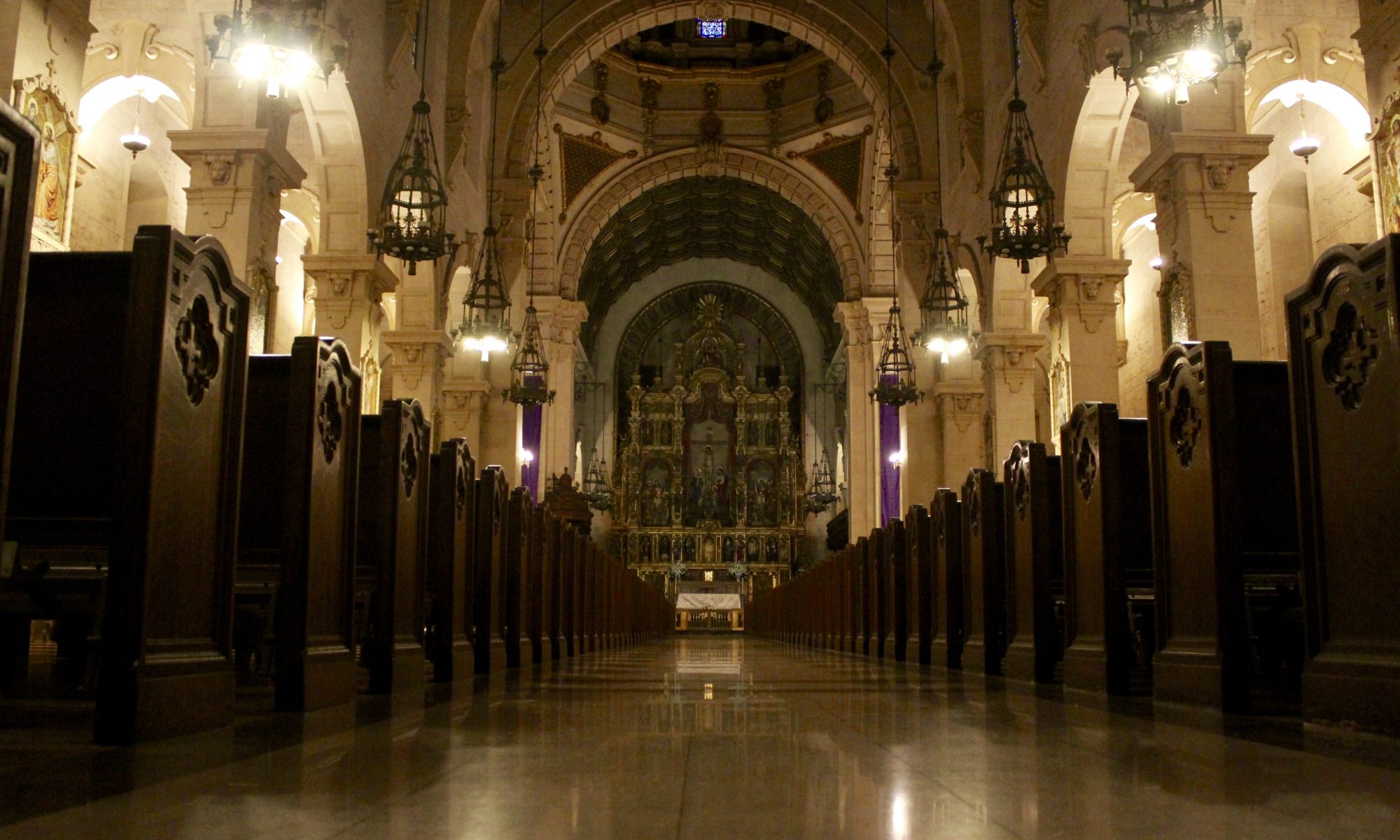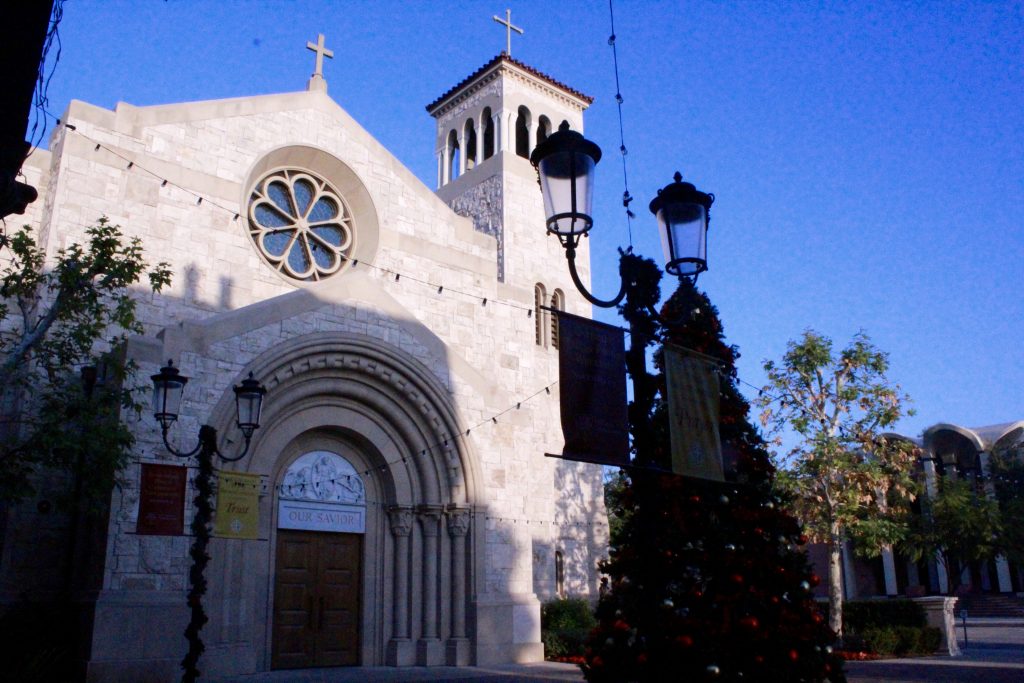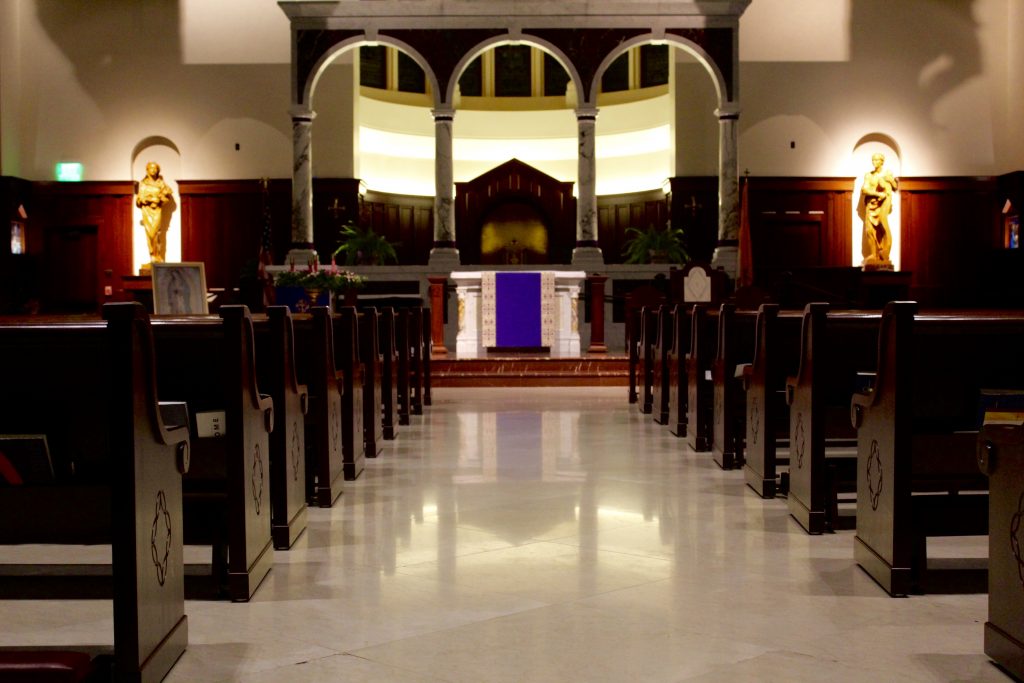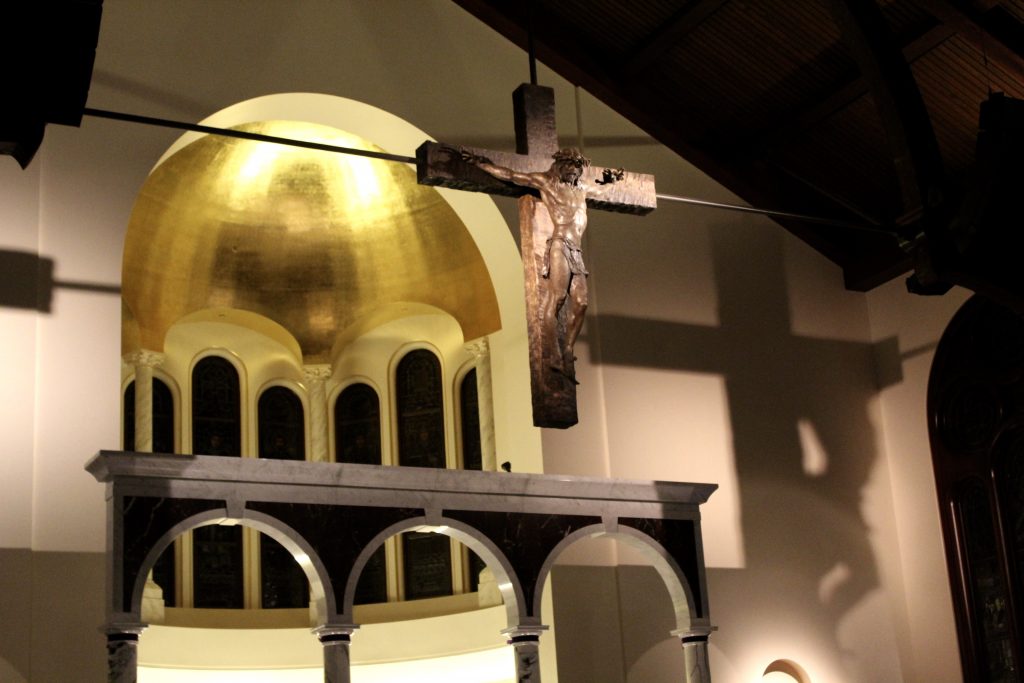In 2007 Sylvia Acayan could tell that the Catholic church was in trouble. She saw the empty pews at mass and the absence of young people in church.
“I knew there was something that was missing,” Acayan said. But at the time, the now president and co-founder of the Saint John Paul II Foundation for the New Evangelization had no former knowledge of the statistics that would soon confirm her observations.
The Pew Research Center’s Religious Landscape study in 2014 found that Catholicism has seen a substantial loss of followers compared to other religions. For every 6 people who consider themselves to be formerly Catholic in the U.S., there is only one person who has converted to the faith. Meanwhile, one group that has been increasing according to the Pew study, is the religiously unaffiliated—commonly referred to as the religious “nones.” These are people who consider themselves to be atheist, agnostic, or nothing in particular.

“I think we’re in the midst of a massive cultural shift,” said Father James Heft, founder and president of the Institute for Advanced Catholic Studies (IACS) at USC. “What it really amounts to is a shift away from religious practice for a good number of these young people to some forms of spirituality.”
According to Heft, young people are turning towards a more individualized approach to religious practice. “It avoids all of the rough edges of being part of a community that has a history,” he said, “it has the benefit of allowing you to think your own way.” However, he also believes that this approach to spirituality underestimates the influence of an increasingly secular culture in the western world.
Jelani Smith, a former leader at the University of Southern California Caruso Catholic Center, and Claire Robertson, a current senior at the University of Southern California are two young converts who were drawn to the history and theology of Catholicism.
“What fueled my curiosity and my pursuit of truth was that I needed it…”
Claire Robertson
“I love learning,” said Robertson, “I’m very curious about the world and about why things are the way that they are and I’m pretty introspective so I’m always curious about truth in many forms in many settings.” She continued, “What fueled my curiosity and my pursuit of truth was that I needed it. I needed to know. I was so curious why for thousands of years billions of people were Catholic and could there be something in that for me?”
Raised in a Baptist household, Smith decided at the age of eight to be baptized and follow Jesus Christ. However, in the years that followed, he felt that his church did not have sufficient answers to his questions about religion. So, he took to Wikipedia.
“The Catholics were the only ones from the research that I did who seemed to have a solid claim to have been started by Jesus Christ,” Smith said. However, it wasn’t until he attended mass with his mother’s Catholic friend and received a blessing during communion, that Smith felt he should continue coming to the Catholic Church. “I remember having a strong sense that I was supposed to be there,” Smith said.
“I remember having a strong sense that I was supposed to be there,” Smith said.
While he was in college, Smith attended masses at Our Savior Parish, just outside of USC’s campus. Each Sunday, three masses are celebrated—one at 10 a.m., one at 5 p.m. and one at 9 p.m. As the masses conclude, churchgoers flood the parish courtyard and reception hall to grab a quick breakfast or a warm dinner with their peers, and for many, their friends.
Our Savior is part of USC’s Caruso Catholic Center, which hosts academically trained religious experts and offers free weekly meals, bible studies, and a welcoming community for students.
“Not only is there the educational component, but we’re also very welcoming,” said Deacon Paul Pesqueira who serves as the Parish Deacon and the Coordinator of Sacramental Preparation at Our Savior Parish. “We’re not here to judge them [students]. We’re here to welcome them, we’re here to love them, and we’re here to say, ‘this is where you’re at on your journey, how can I help you?’”
Like Smith, Robertson has been directly impacted by the Catholic Center’s efforts. Although she was Presbyterian at the time, Robertson decided to join a bible study at the Catholic Center when she started at USC. But it was the people she encountered at the center, from the students to the nuns, priests, and campus ministers, that made her engage more deeply with the Catholic faith.
“I found authentic friendship with people here that I was seriously seeking and seriously lacking,” Robertson said. “There’s something really incredible about the opportunity to share with somebody the faith that’s at the core of your being.”
Hear more about their stories:
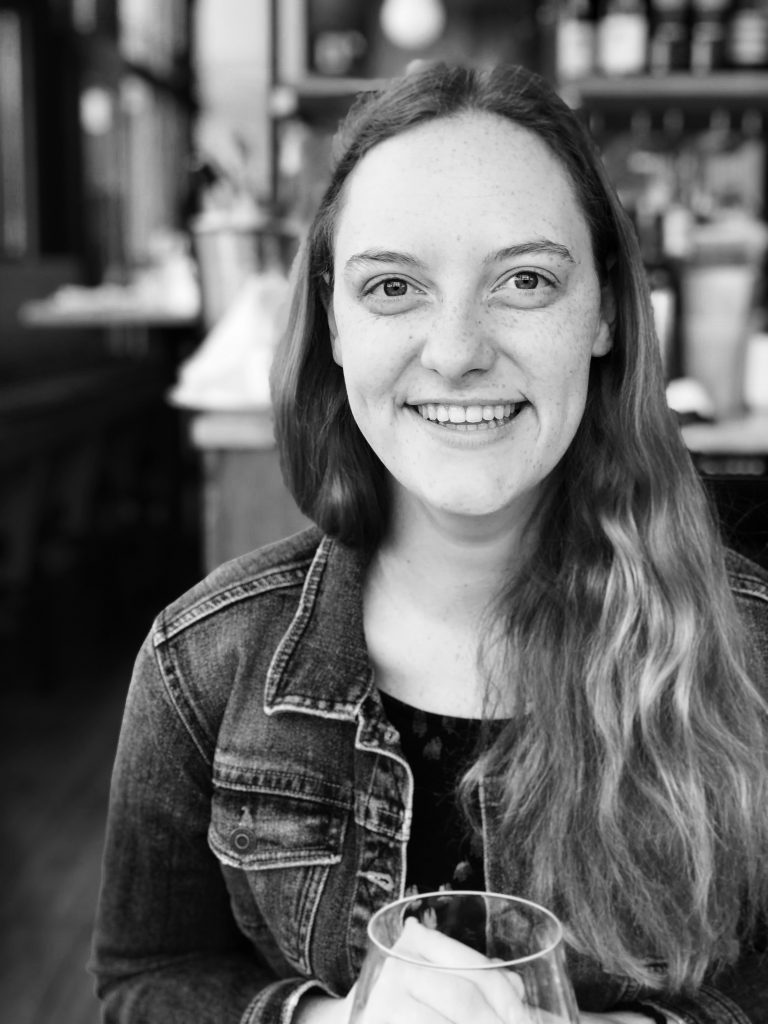
Claire Robertson 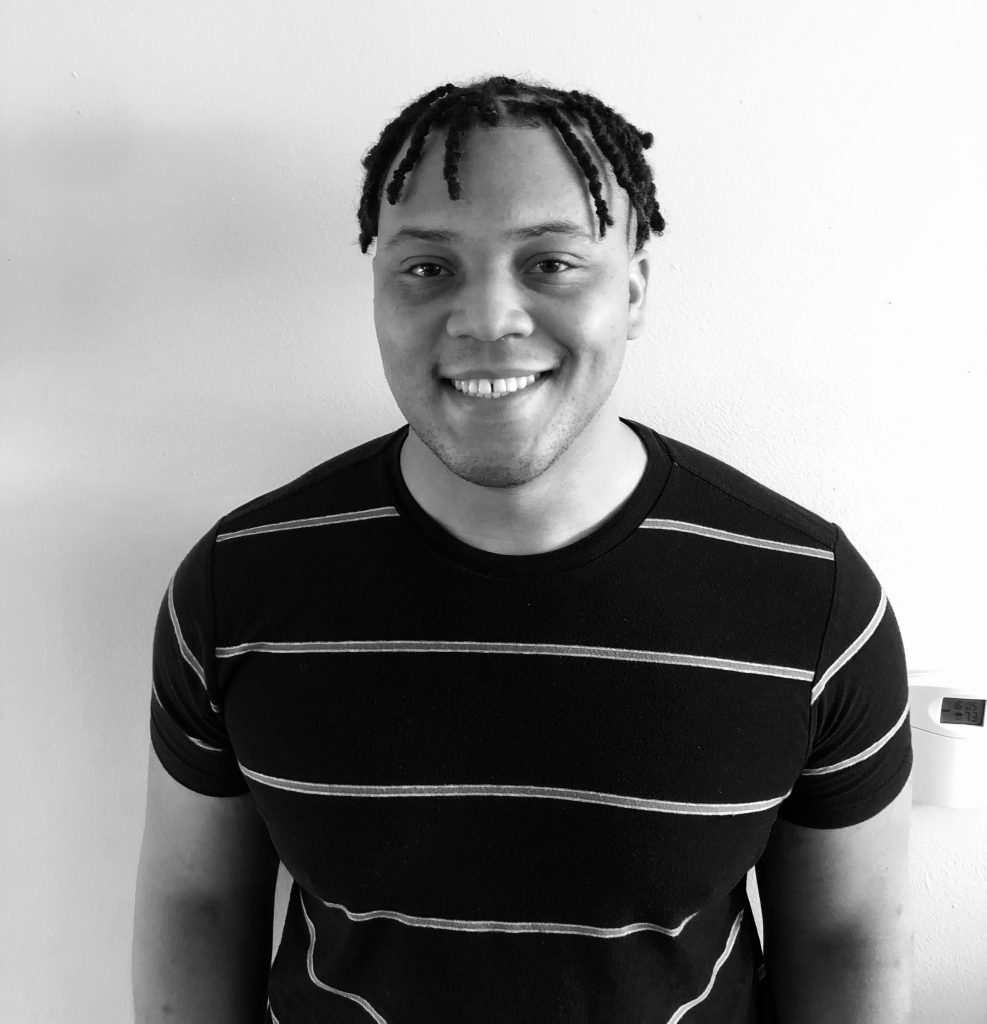
Jelani Smith
Based on Pew’s data, Jelani and Claire are unusual compared to nationwide trends. Even within the Catholic community, a movement known as New Evangelization has pushed churches to re-educate and re-evangelize already baptized Catholics rather than converting outsiders into the faith.
Heft said that those who support the New Evangelism movement see that, “we’ve got a lot of Catholics who are baptized but not converted. There are a lot of Catholics out there that have drunk more fully of the culture than they have of the Christian tradition.”
The Fellowship of Catholic University Students, more commonly known as FOCUS, is one organization that works in pursuit of the New Evangelization movement by training and deploying missionaries to college campuses across the U.S.
Hilary Draftz, an area director for FOCUS, says the movement was commissioned by Saint John Paul II in the mid-20th century because he recognized the reality that most Catholics were not well informed about their faith and were beginning to move away from the Catholic Church because they did not, “know Jesus.”
While Draftz presented just one of the many theories as to why Catholics may be pulling away from the church, the lack of proper religious education has also been documented by another Pew Research survey conducted in August of this year. This survey asked respondents about the process of transubstantiation – a belief core to the Catholic mass and Catholic teachings in which the bread and wine used for communion are believed to physically transform into the body and blood of Jesus.

Pew’s study found that 69 percent of people who identify as Catholic believe that transubstantiation is symbolic, and the communion wafer does not physically become the body and blood of Jesus. Forty-three percent of these respondents believe that this is what the Church teaches, although that is not true.
The New Evangelization movement looks to combat these false perceptions through the re-education of Catholic principles and value teachings. Supporters believe showing Catholics the theological depth of their religion and helping them develop a personal connection to the faith will, in turn, decrease the likelihood that they will leave the Church.
“In the past it was like Christianity became cultural. Your parents are Catholic, and you went to church and it was just a culture that you were immersed in,” said Acayan “but that cannot be true anymore in this secularized society. There needs to be an intentional acceptance of the good news.”
However, traditional forms of missionary work and community engagement are only one way to spread the word about the Catholic faith.
Lizzie Reezay, is a YouTuber who has been sharing her life online since 2015. But Reezay’s online presence is unlike some of the mega-vloggers and mukbangers on the platform. Sure, she may be doing question and answer videos, apartment tours, and sharing her morning routine, but at the core of many of her videos is her faith.
Similar to Smith and Robertson, Reezay converted to Catholicism just last year. While she says that the goal of her channel has never been to convert people or to change their beliefs, Reezay does see YouTube as an effective way to distribute information so that her viewers can come to their own conclusions.
“I think one of the reasons that my channel has been so effective is that I don’t have a grad degree, I’m not a professor, I’m not a scholar, I’m not an expert,” said Reezay. “I’m just a young woman who’s done some research and learned more about her faith… because I’m young and because I’m inexperienced, [I’m] actually more accessible and I’m able to point people toward experts and toward scholars.”
“I’m just a young woman who’s done some research and learned more about her faith…”
Lizzie Reezay
And she’s not the only one. Content creators on Instagram and YouTube have capitalized on the popularity of social platforms to share their faith and their lifestyle. Many have even reached influencer status, establishing communities online that discuss Catholic principles and advice on how to live a life that is better aligned to Catholic teachings.
“There are a lot of Catholic YouTube channels and a lot of Catholic people on social media,” Reezay said, “I think that we’ve all together been able to make theology and philosophy really fun and be something tangible and engaging to everyone.”
Click below to hear more from Reezay and another Catholic social media influencer, Patrick Coffin.
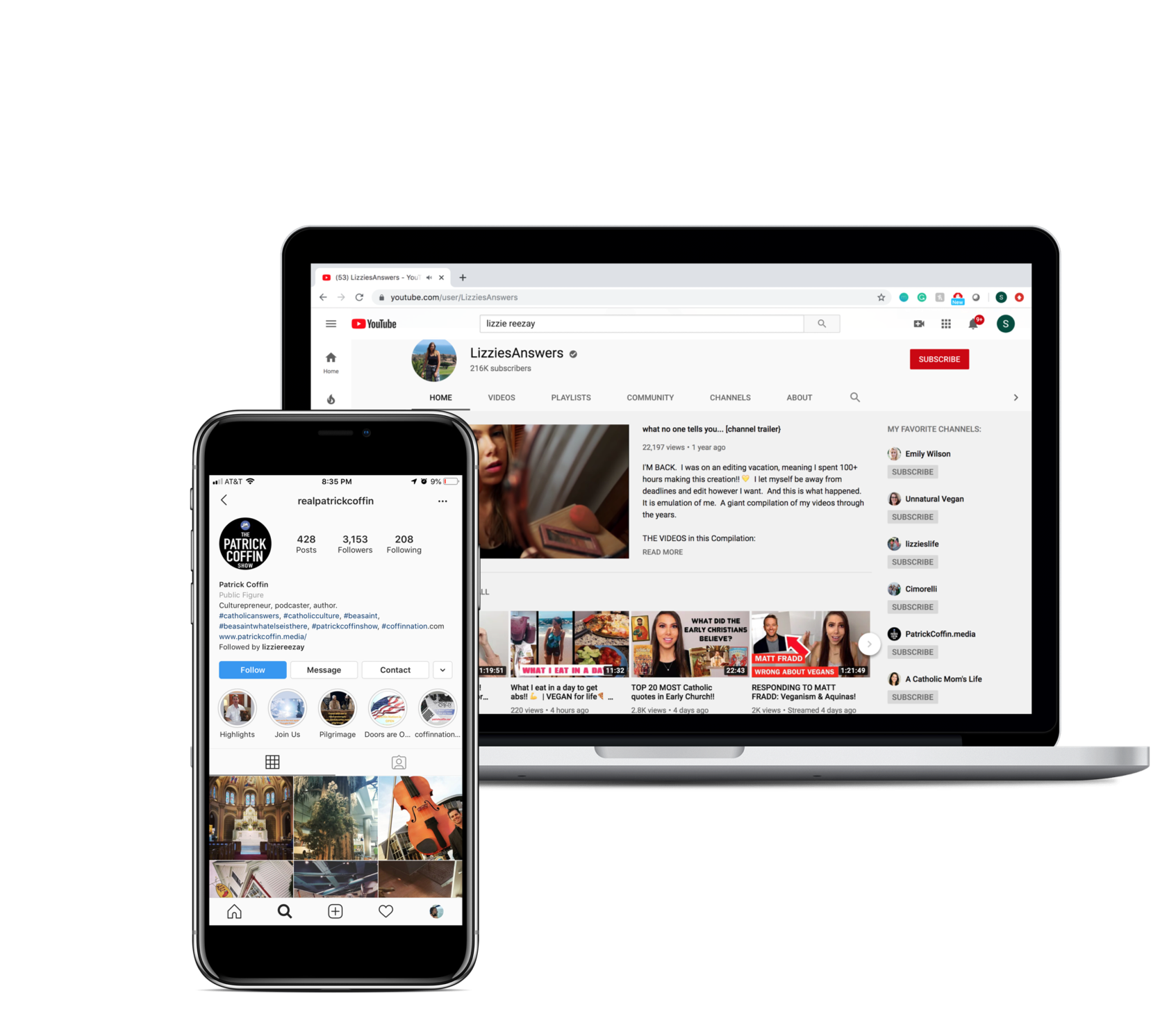
Pesqueria says social media influencers and digital religious communities are great ways to bolster one’s faith, but he still stands by the in-person community that he helped develop at the USC Catholic Center.
“I do believe that social media is one of the key ways for us as a church to move forward,” said Pesqueira. “For me it’s not just social media…it’s the person, the one on one, and being enhanced by the social media.”
The mission of each social media influencer can be different. However, like Reezay and the New Evangelization movement, their content is not always meant to be a way to bring new people into the church. According to Robertson, seeing Catholic influencer content can be a great tool to learn more about her faith and a reminder of why she believes in the Church teachings. “Seeing these people who are catholic and who share the beliefs that I have or who are well versed in the beliefs that I have in ways that I can’t articulate is really inspiring,” she said.
Smith, who jokes that he evangelized himself with a little help from Wikipedia, says the efforts of the New Evangelization movement probably kept him in the church.
“I would seek out those resources and those tools to lead bible studies, to talk to other friends about faith, to help bring them back into the church, or talk about the church,” Smith said.
On a larger scale, it is hard to know if these New Evangelization initiatives or social media influencers will slow down the declining numbers of U.S. people who identify as Catholic. However, an emphasis on church theology and reasoning, regardless of whether it’s delivered over a meal after mass or on a 3-by-5-inch screen, really resonates with a certain population of curious young people searching for truth at the same time that it turns other more skeptical people away.
“If an individual is encountering the Catholic faith and finds that their reasonable questions are not being answered they should continue to dig deeper,” Smith said. “Questioning should be encouraged, dialogue needs to be had…To negate the rational faculties of an individual is a disservice to humanity and the creator of humanity.”
